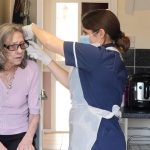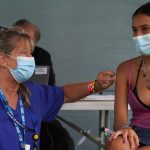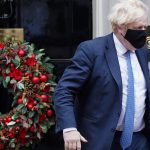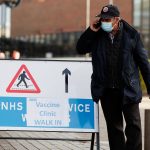The increase in the number of adults in the UK who are likely to have COVID-19 antibodies is beginning to show signs of slowing down.
Latest estimates from the Office for National Statistics (ONS) show more than nine in 10 adults in all nations and regions have antibodies.
Once infected or vaccinated, the length of time antibodies remain at detectable levels in the blood is not fully known.
Live COVID updates from the UK and around the world
Please use Chrome browser for a more accessible video player
The ONS said it is still “not yet known how having detectable antibodies, now or at some time in the past, affects the chance of becoming infected or experiencing symptoms”.
The ONS added there is a clear pattern between vaccination and testing positive for COVID antibodies, but “the detection of antibodies alone is not a precise measure of the immunity protection given by vaccination”.
“We also do not yet know exactly how much antibodies need to rise to give protection,” the ONS said.
The presence of antibodies suggests someone has had the infection in the past or has been vaccinated.
Please use Chrome browser for a more accessible video player
Antibodies can remain in the blood at low levels, although these can decline over time to the point that tests can no longer detect them.
The figures excludes people in hospitals, care homes and other institutional settings and comes amid ongoing concern from charities that people who are immunosuppressed may have reduced or no protection at all from a vaccine.
The latest estimates from the ONS are based on a sample of blood test results for the week beginning 12 July.
They show that in England an estimated 93.6% of adults are likely to have COVID antibodies, up from 89.1% a month ago.
This represents the smallest month-on-month increase since early January.
In Wales, the estimate is up from 90.3% to 93.2%, while in Northern Ireland it is up from 87.1% to 90.7%. For Scotland, the estimate has risen from 84.5% to 92.5%.
The figures for these nations also show signs of levelling off in recent weeks.
The highest percentage of people showing antibodies continues to be in the older age groups, with the lowest among the youngest groups across the four UK nations.
This reflects the way the vaccination programme was rolled out across the country, with older people offered the jab first.
Some parts of the UK are starting to see a drop in the percentage of people testing positive for antibodies among the oldest age groups, though rates among these groups remain high, the ONS data found.






















